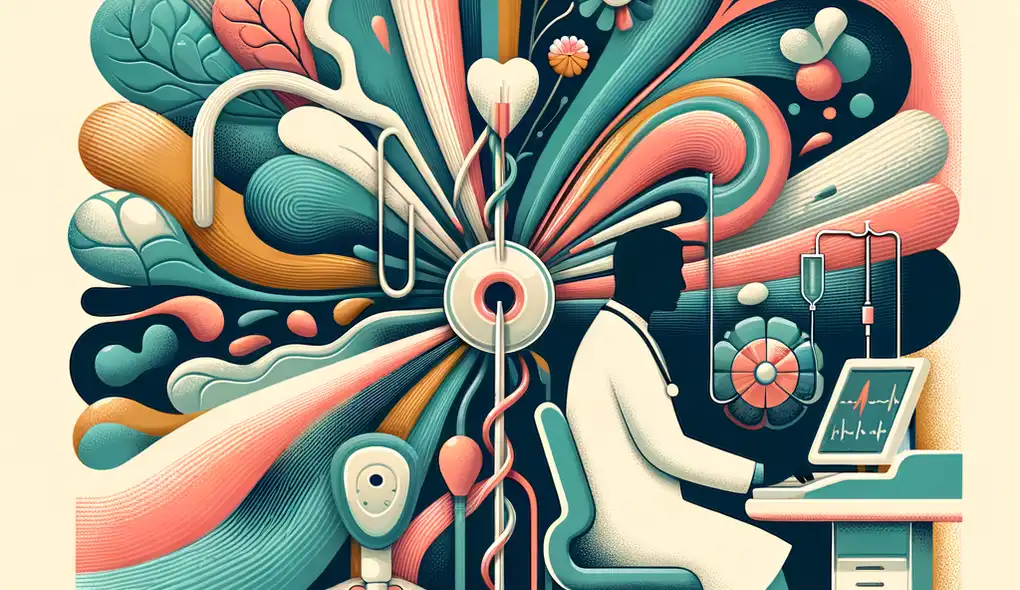How do you ensure accurate interpretation of medical images and provide diagnostic information?
Interventional Radiologist Interview Questions
Sample answer to the question
To ensure accurate interpretation of medical images and provide diagnostic information, I would first carefully review the patient's medical history and the reason for the imaging study. This helps me understand the context and potential findings. Then, I would thoroughly analyze the images, paying attention to details and comparing them to normal anatomy. If necessary, I would use advanced imaging software and tools to enhance visibility and clarity. Additionally, I would consult with other radiologists or specialists to discuss complex cases and seek their expertise. Finally, I would provide a detailed report with my findings and recommendations to the referring physician, ensuring clear and concise communication.
A more solid answer
To ensure accurate interpretation of medical images and provide diagnostic information, I follow a systematic approach. Firstly, I thoroughly review the patient's medical history, including prior imaging studies and relevant clinical information. This helps me understand the patient's condition and provides important context. Next, I carefully scrutinize the images, analyzing each structure and comparing them to normal anatomy. I use advanced tools and software to enhance the visualization and clarity of the images, allowing for more accurate interpretation. Collaboration is crucial in my practice, so I regularly consult with other radiologists and multi-disciplinary teams to discuss complex cases and gather different perspectives. This helps ensure the accuracy and quality of my interpretations. Continuous learning is essential in the field of radiology, so I constantly stay up-to-date with the latest advancements in imaging technology and diagnostic techniques through attending conferences, participating in research, and engaging in continuing medical education. This allows me to provide the most accurate and state-of-the-art diagnostic information to patients and referring physicians.
Why this is a more solid answer:
The solid answer provides more specific details and examples on how the candidate ensures accurate interpretation of medical images and provides diagnostic information. It addresses all the evaluation areas mentioned in the job description, such as image interpretation, diagnostic accuracy, collaboration, technical proficiency, and continuous learning. However, the answer can still be improved by providing more specific examples of collaboration with other healthcare professionals and how the candidate has used their technical proficiency to enhance interpretation.
An exceptional answer
Ensuring accurate interpretation of medical images and providing diagnostic information requires a comprehensive approach. Firstly, I start by thoroughly reviewing the patient's medical history, including clinical data and prior imaging studies. This helps me understand the patient's condition better and provides important context for the interpretation. When analyzing the images, I pay meticulous attention to every detail and compare them to normal anatomy, identifying any abnormalities or potential findings. To enhance my diagnostic accuracy, I utilize advanced radiological technology and software, such as 3D reconstructions and multiplanar imaging, allowing for a more comprehensive assessment. Collaboration is integral to my practice, and I actively engage with other radiologists, clinicians, and specialists to discuss complex cases and gather different perspectives. This collaboration not only ensures accurate and reliable interpretations but also contributes to comprehensive patient care. I also participate in regular multidisciplinary meetings to contribute to treatment planning discussions and share my expertise. To maintain technical proficiency, I constantly update my knowledge and skills by attending conferences, workshops, and staying up-to-date with the latest research in radiology. This commitment to continuous learning enables me to provide the highest standard of care and deliver accurate diagnostic information to patients and referring physicians.
Why this is an exceptional answer:
The exceptional answer provides a comprehensive and detailed approach to ensuring accurate interpretation of medical images and providing diagnostic information. It demonstrates a deep understanding of the evaluation areas mentioned in the job description, such as image interpretation, diagnostic accuracy, collaboration, technical proficiency, and continuous learning. The answer also includes specific examples of how the candidate utilizes advanced radiological technology and software, actively engages in collaboration with other healthcare professionals, and maintains technical proficiency through continuous learning. It showcases the candidate's expertise and commitment to providing the highest standard of care. However, the answer can further be improved by providing specific examples of how the candidate has collaborated with multidisciplinary teams and how they have contributed to treatment planning discussions.
How to prepare for this question
- Familiarize yourself with common medical imaging techniques and their interpretation guidelines.
- Stay updated with the latest advancements in radiological technology and diagnostic techniques.
- Practice analyzing and interpreting different types of medical images to improve your skills.
- Research and understand the role of collaboration and interdisciplinary teamwork in radiology.
- Be prepared to provide specific examples of how you have utilized advanced technology and software in your previous work experience.
- Highlight any continuing education, conferences, or workshops you have attended to demonstrate your commitment to continuous learning.
What interviewers are evaluating
- Image interpretation
- Diagnostic accuracy
- Collaboration
- Technical proficiency
- Continuous learning
Related Interview Questions
More questions for Interventional Radiologist interviews